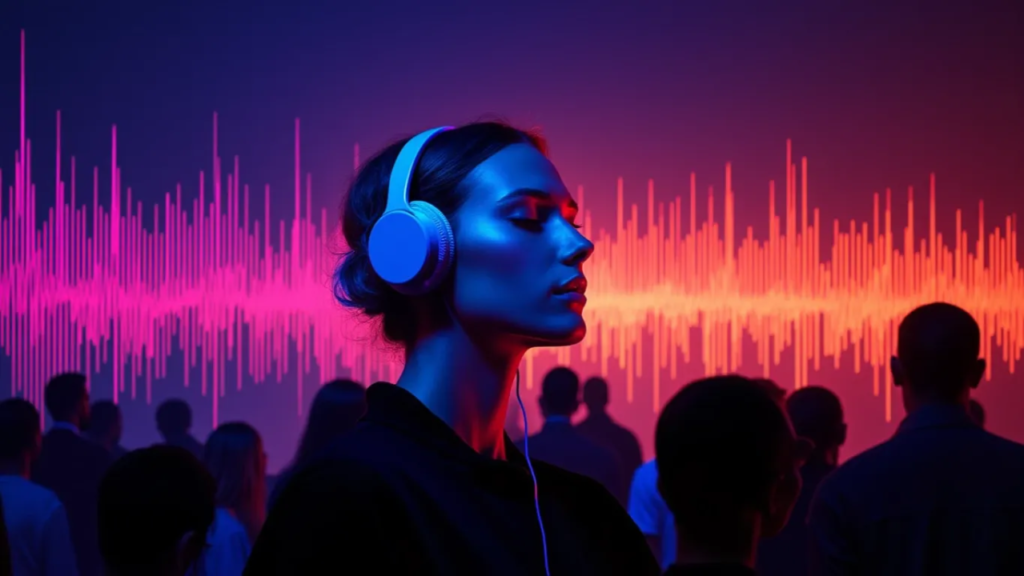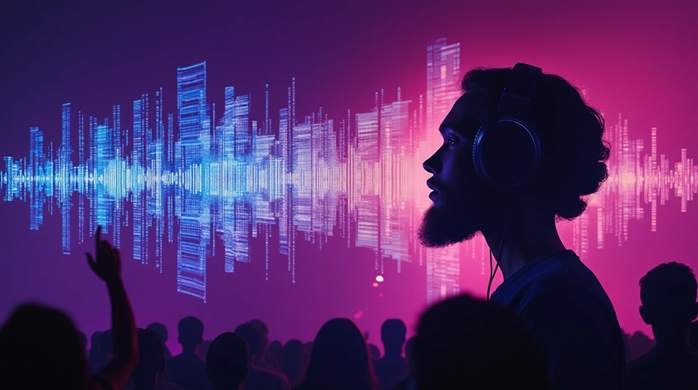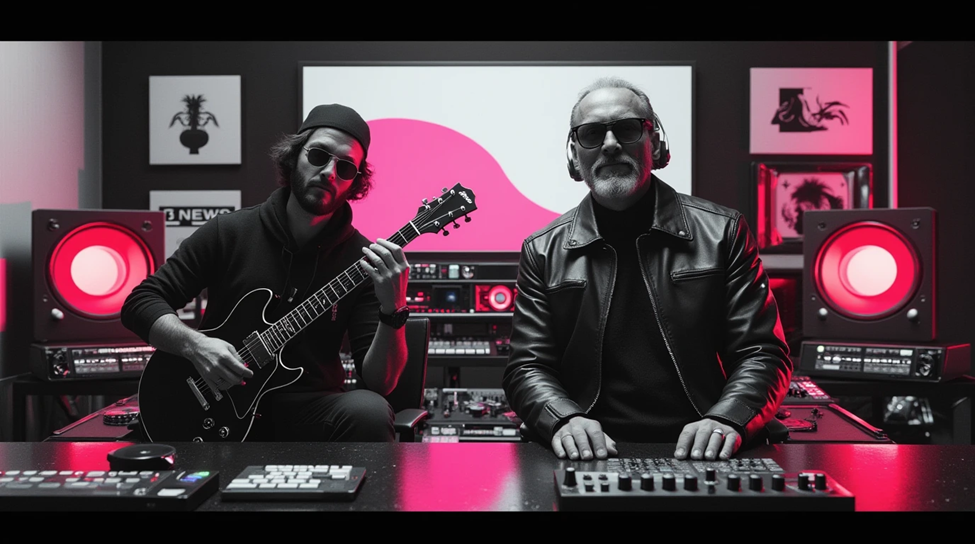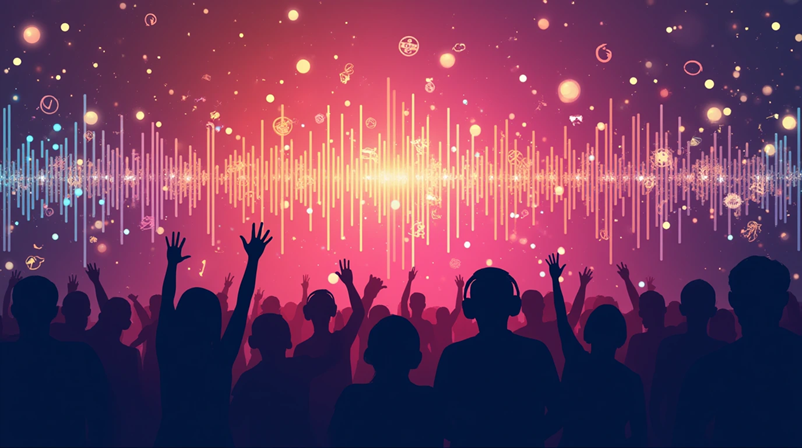
Music is more than just a form of entertainment—it’s a powerful branding tool that influences emotions, shapes consumer behavior, and builds long-term brand loyalty. From iconic jingles to artist collaborations that define entire generations, companies strategically use music to strengthen their connection with consumers. Let’s explore how music has become the secret weapon for brand affinity.
The Science of Sound and Memory
Have you ever heard a melody and instantly associated it with a brand? That’s no accident. Music has a unique way of embedding itself into our subconscious, triggering emotions and memories. The limbic system— the brain’s emotional and memory center— processes music in a way that makes it deeply impactful in branding.
- The Power of Repetition: Sonic branding thrives on consistency. The more frequently we hear a melody, the more familiar and trustworthy it feels.
- Dopamine and Association: When a brand pairs itself with an uplifting tune, it reinforces positive emotions in the consumer, increasing the likelihood of brand recall and preference.

Sonic Branding: The Signature Sounds of Iconic Brands
Intel’s Five-Note Chime: The Gold Standard of Audio Branding
Perhaps the most famous sonic logo of all time, Intel’s five-note chime is played once every five minutes across the globe. This simple yet effective melody immediately signals reliability, innovation, and cutting-edge technology—perfectly aligned with Intel’s brand identity.
McDonald’s “I’m Lovin’ It” Jingle
Since its introduction in 2003, McDonald’s “ba-da-ba-ba-ba” has been synonymous with fast food worldwide. Originally performed by Justin Timberlake, the campaign was a multi-faceted strategy blending celebrity influence, a catchy tune, and global advertising consistency.
Netflix’s “Tudum” Sound Effect
Netflix’s iconic “Tudum” sound before a show begins is a masterclass in simplicity. It builds anticipation, primes the viewer for immersive storytelling, and has become an instantly recognizable signature in streaming culture.
How Brands Leverage Music to Build Emotional Connections
1. Nike’s Use of Empowering Anthems
Nike understands that music can drive motivation. From Eminem’s Lose Yourself to Kanye West’s Power, the brand consistently uses high-energy, empowering songs to align with its “Just Do It” philosophy. This emotional connection fuels consumer engagement and strengthens brand identity.
2. Coca-Cola’s Seasonal Music Strategy
Coca-Cola masterfully associates music with seasonal nostalgia. The brand’s Christmas campaigns consistently use warm, sentimental melodies, reinforcing its image as a brand that brings people together. The classic Holidays Are Coming jingle has become synonymous with the festive season.
3. Apple’s Curated Playlists and Event Soundtracks
Apple doesn’t just sell products—it sells experiences. The company curates meticulously chosen soundtracks for product launches, commercials, and even in-store experiences, ensuring that every touchpoint aligns with its sleek, modern, and creative brand persona.

Artist Collaborations: The Fusion of Music and Brand Identity
Pepsi and Michael Jackson (1984)
Pepsi’s legendary collaboration with Michael Jackson revolutionized music marketing. The “New Generation” campaign aligned the brand with Jackson’s global superstardom, securing Pepsi’s status as the youthful, rebellious alternative to Coca-Cola.
Adidas and Kanye West (Yeezy Brand)
Adidas’ partnership with Kanye West didn’t just result in successful sneaker sales—it merged music, fashion, and brand identity into a cultural movement. The Yeezy brand reinforced Adidas’ image as trend-driven and artistically innovative.
Bose and Billie Eilish
Bose’s recent collaborations with Billie Eilish focus on immersive sound experiences, reinforcing the brand’s positioning as premium, cutting-edge audio technology for music lovers.

The Future of Music in Branding
As AI and streaming platforms continue to shape music consumption, brands are leveraging data-driven insights to personalize music experiences for consumers. From algorithmic playlist curation to interactive brand soundtracks, the evolution of music marketing is more dynamic than ever.
- AI-Powered Personalization: Spotify and Apple Music analyze listening habits to create hyper-personalized playlists, giving brands a new way to integrate into users’ everyday experiences.
- Voice Assistants and Sound Branding: As smart speakers become more common, brands are investing in unique sonic cues that integrate seamlessly into voice-activated experiences.
- Interactive Music Campaigns: Brands are engaging consumers through gamified experiences, such as remixable tracks and user-generated content contests on TikTok.
Key Takeaway: Music is the Ultimate Brand Connector
Music is more than just a background element—it’s a strategic asset that enhances brand recognition, deepens emotional connections, and creates lasting consumer relationships. Whether through sonic logos, curated soundtracks, or artist collaborations, the right music can transform a brand’s identity from ordinary to unforgettable.

Leave a Reply